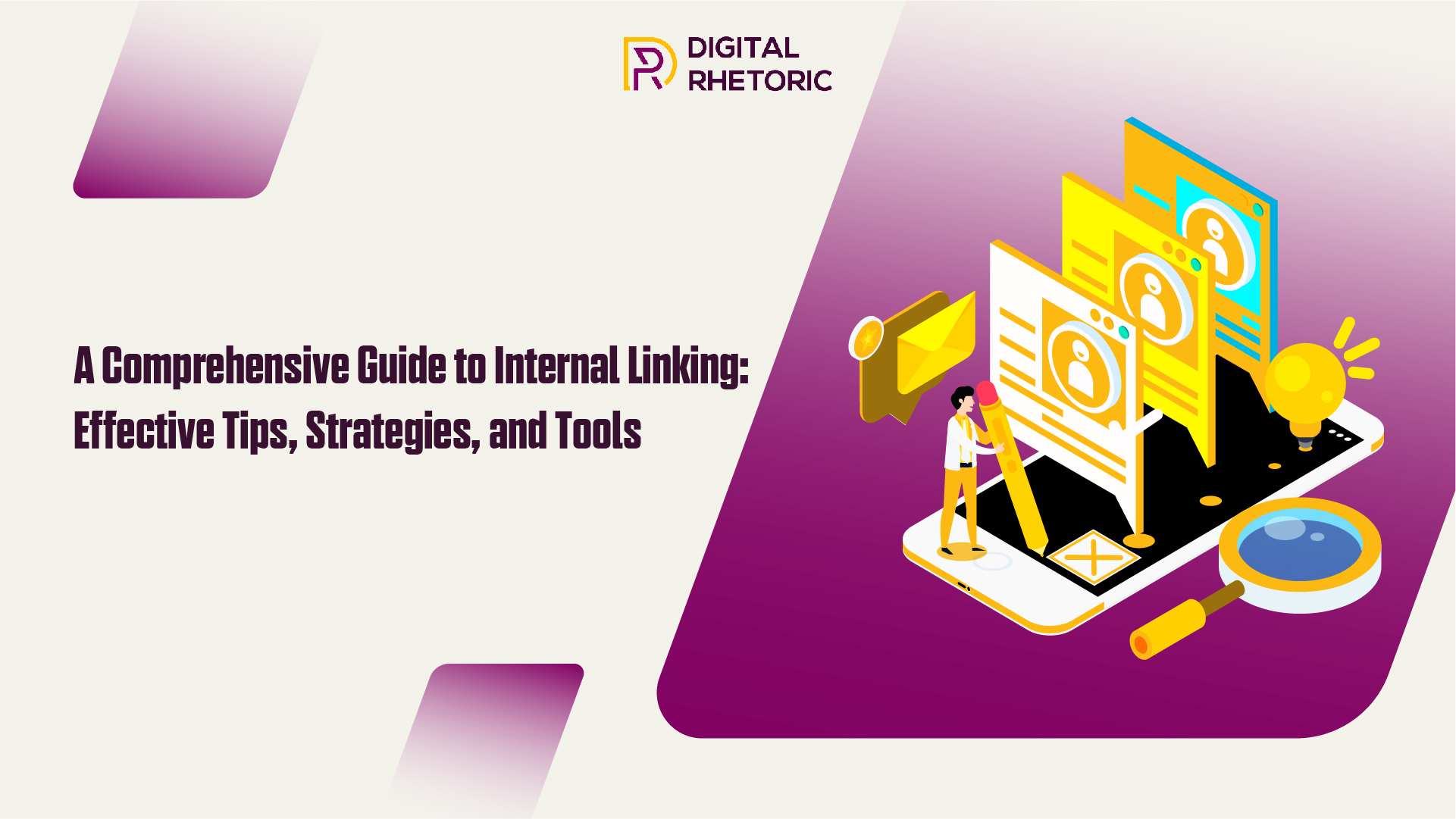A Comprehensive Guide to Internal Linking: Effective Tips, Strategies, and Tools
- Sanjay Thakore
- May 29, 2024
- Blog
- Internal linking, Internal linking best practices, Internal linking SEO, Internal linking strategies, Internal linking tools
- 0 Comments

Coming up with the best internal linking strategies is vital for both the user interface and search engine optimization. Utilizing the best internal linking SEO features enables a website to direct users seamlessly to their pages while increasing the relevance and ranking of pages in search engine results. Optimal internal linking structures promote a perfect user-friendly website architecture.
Internal linking is the practice of creating links to pages that exist within the same domain to direct the user to various parts of the site. Following the internal linking best practices, the user effortlessly finds the necessary information, while the search engine establishes the value and context of the content, thus promoting the SEO structure of the site.
Benefits of Internal Linking
The optimized website navigation through internal linking tools offers. It strategically connects related pages and simplifies the user’s path across the site. Such an increase in online content access and discoverability increases user engagement. People stay longer and explore more when they can quickly find interesting, related information.
Ensuring that every page receives links from other pages on the website can help distribute page rank more equitably across the site. Each io page run that receives these links raises the more well-known pages’ authority while also boosting each page’s authority, increasing their visibility in search engine rankings on even the most obscure site.
Internal linking greatly helps in reducing bounce rates because it entices people to go through many pages rather than leaving after reading one. Since all the links provided are related to what they are reading, the visitors stay longer on your site reading other information. The longer interaction with visitors sends a very important signal to search engines.
Key Strategies for Effective Internal Linking
- Relevance and Context: Internal linking strategies should focus on linking with the content that is central to the affiliated pages, particularly if they also add value to the reader. Such a strategy is essential for internal linking SEO because search engines will only regard the link between pages as meaningful if the pages are related to the user’s search purpose and knowledge necessity. As a result, the site will be more topical for search engine algorithms and users will be happier.
- Anchor Text Best Practices: The internal linking best practices require one to use anchor text that is descriptive and wields enough keywords in a way that it easily integrates into the content without being too obvious. Internal linking tools significantly help in word choice to adequately increase your article’s SEO value while being very readable. In summary, this helps ensure that all referred links are useful and simple to locate on a page and contextually relevant, leading to improved site navigability and SEO performance.
- Link Placement: It is important to put links in the main body; it is where users are most active and interested in finding more information. While users pay attention to the footers or sidebars sporadically, the links integrated into the text are organically perceived. Overall, readers find it helpful.
- Linking Deep: The spread of traffic across the site also offers an additional advantage. By adding deep linking to the inner pages rather than just the top-level ones, the publisher increases the visibility and ranking of the underexploited parts of the site. This experience provides the audience with better content and additional knowledge, increasing its interaction and the authority’s outreach to the rest of the content spectrum.
Common Mistakes to Avoid in Internal Linking
- Overlinking a single page or stuffing anchor text with excessive keywords can dilute the quality of your content and potentially trigger SEO penalties. This practice disrupts user experience and undermines the credibility of your site.
- Linking only to top-level pages while neglecting deeper or older content can lead to underutilized resources and missed opportunities for enhancing site depth and relevance. This approach limits the exposure and SEO potential of comprehensive content hidden within the site.
- Using non-descriptive or generic anchor text like “click here” fails to inform users or search engines about the relevance and content of the linked page. This practice diminishes SEO value and can lead to a poor user experience by not setting clear expectations.
- Failing to update or maintain internal links results in broken links, which can severely disrupt the user experience and harm the site’s SEO health. Regular audits are essential to ensure all links are active and lead to relevant, up-to-date content.
Tools and Resources for Optimizing Internal Links
Introduction to tools that can help identify internal linking opportunities and manage link structure:
- SEO Audit Tools: An audit, as well as a visualization of the structure of the website, are also quite possible with the help of specific tools, such as Screaming Frog, Ahrefs, or Moz. An indispensable assistant in auditing a URL crawl and analyzing site elements is Screaming Frog. An in-depth understanding of internal linking and SEO health can be achieved with Ahrefs. On the other hand, Moz is good for tracking SEO performance and issues. In general, these tools help track and eliminate structural problems, thereby making their SEO strategy more effective.
- Content Management Plugins: WordPress users have access to plugins, such as Yoast SEO and Link Whisper, which notably facilitate internal linkage control and recommendations. While Yoast SEO analyzes the content and advances parameters for search engine optimization and suitable internal linkage, Link Whisper applies artificial intelligence to prompt permissible internal connections. Thus, these tools ensure the links are strategic and contextually pertinent.
Brief tutorials or tips on how to use these tools effectively:
- Screaming Frog: Regularly scan your entire website to identify broken links and redirect issues.
- Ahrefs: Utilize the site audit feature to analyze internal link distribution and identify orphan pages.
- Moz: Set up weekly crawls to monitor and improve overall site health and track keyword rankings.
- Yoast SEO: Use the link suggestions feature when writing content to easily add relevant internal links.
- Link Whisper: Review automatic link suggestions carefully to ensure relevance and avoid overlinking.

